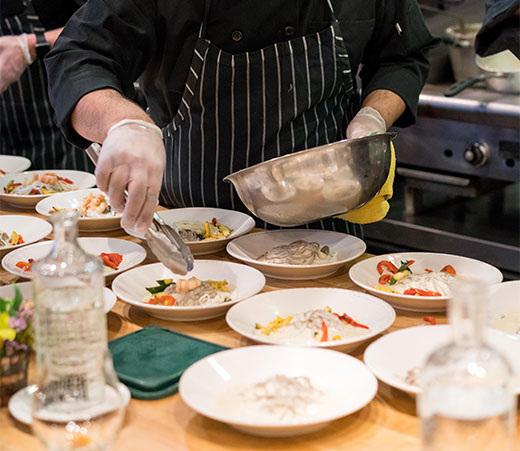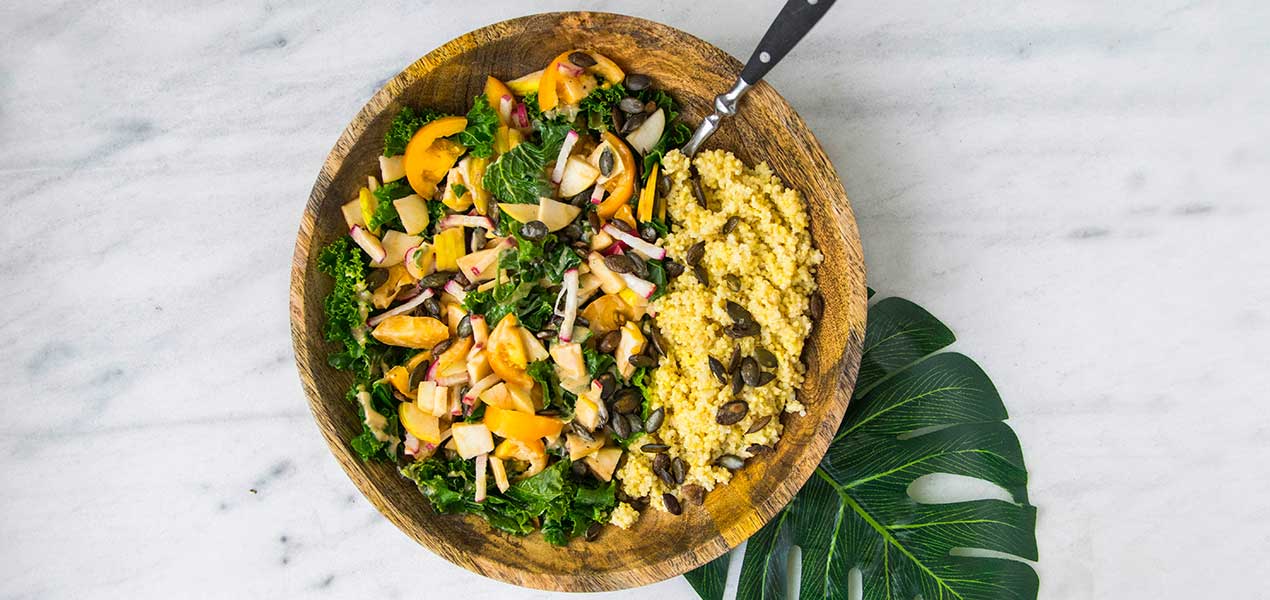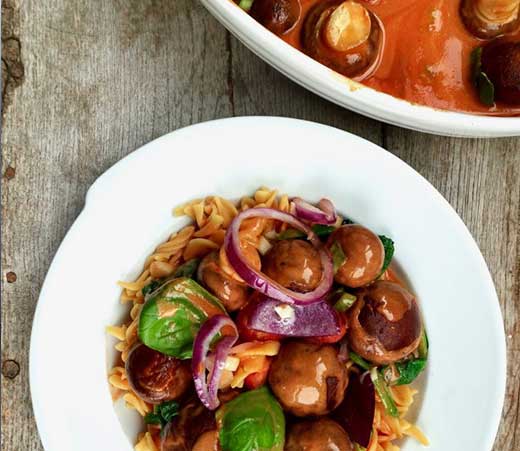

Vegetable: Kale
Kale is a real winter vegetable and very healthy. It’s part of the Dutch culture and grows on Dutch soil.
Kale contains a lot of vitamins A and C. These vitamins clean up your body of aggressive substances. These vitamins are also very important for your resistance and your eyes.
Kale contains also a lot of vitamin B, which improves your digestion, energy and blood circulation. Furthermore, they are good for your skin, hair and nails.
Kale contains Omega-3 fat! The Omega fats are very important fatty acids. Vegetarians often take in too little Omega fats because they are mainly in animal products.
We all know Kale stew, but did you know that kale is also very tasty in an omelet, soup or in a wok dish.
Fruit: Apples
An apple is packed with vitamins and minerals. A large part of this is in the peel. So it is better and easier if you eat your apple with peel.
Are the Elstar, Jonagold, Goudrenet or Pink Lady the only types of apple that you know? There are many more: about 7500 species.
Apples need a good time to grow from seed into full apple tree with apples: ten years. This is comparable to the life span of a dog or cat.
Did you know that it’s better to keep your apples in the fridge. Apples can be kept for up to three weeks longer if you put them in the fridge.


Now that the last die-hard carnivores are slowly turning towards the vegetarian section at the supermarket, we can safely say that plant-based eating is no short-lived trend but a movement that can no longer be stopped.

11 tips by Lisa goes Vegan for eating vegetables more frequently



